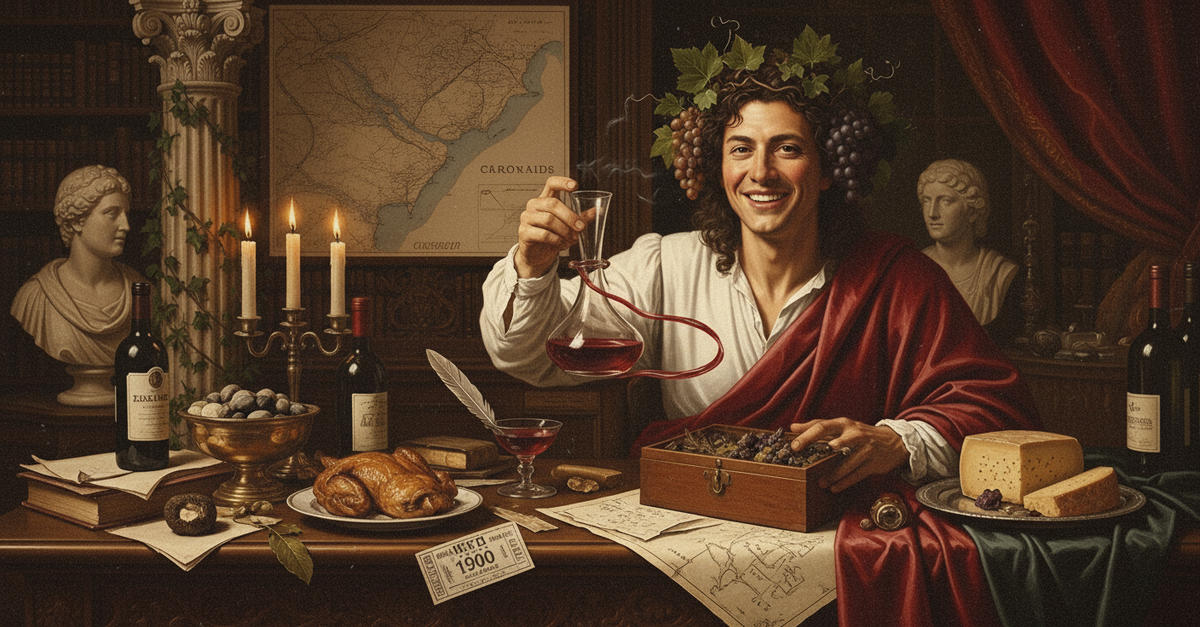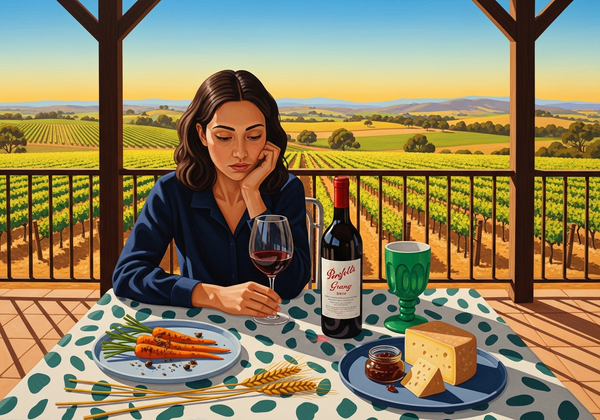Time Capsule With A Pulse: Why Château Margaux 1900 Still Stares You Down
A living Belle Époque: garnet hue, dried rose and cedar nose, silk-smooth tannins, tobacco and truffle finish. Serve cool, decant briefly.

You think you’ve tasted “old.” You haven’t tasted 1900 Margaux. This isn’t a bottle, it’s a séance with a heartbeat. One pull on the cork and Belle Époque Paris flickers on: the Métro’s first rush of air, peacocks of Art Nouveau, the world’s fair buzzing like a beehive of brass. Freud is sharpening his scalpel for the psyche; Oscar Wilde is exhaling his last barbed epigram. Meanwhile, on a wind-brushed gravel island in the Médoc, Cabernet and Merlot are writing one of Bordeaux’s stubborn love letters to time. Tonight we open the envelope.
Candlelit Velvet And Dried Roses
In the glass, it pours a deep, transparent garnet—no corpse here—rim fading to antique topaz like sunset through cathedral glass. The nose arrives in scenes, not scents: a cedar wardrobe cracking open; violets pressed inside old books; black tea in a silver pot; saddle leather oiled by a century of conversation. Truffle whispers, cigar box smolders, a wisp of dried blackcurrant keeps the fruit alive like a ruby under lamplight. You can practically hear the clink of absinthe spoons across the channel in 1900.
Texture With A Memory
Sip. The first sensation is poise. Think silk that remembers the shape of your shoulders. Tannins have melted into fine cashmere—no grit, just a firm handshake from someone who’s seen a war and kept his humor. Acidity is a narrow, bright river carrying flavors downstream: black tea, dried red plum, saffron smoke, forest duff after rain. Mid-palate turns savory—tobacco leaf, bay, a flicker of orange oil—and then the finish: astonishingly persistent, like a long tracking shot through a mahogany library, ending on a bowl of dried cherries and a smoldering cigar end. It’s not “power.” It’s narrative torque.
The Year The World Gilded Itself
Why does this matter? Because 1900 was Bordeaux in recovery and resurrection. Phylloxera’s wreckage was being replanted on American rootstock; craftsmanship, not fashion, ruled the chais. At Margaux—the first-growth temple with gravel bones and a talent for perfume—those deep Günzian stones radiated daytime heat into twilight, ripening Cabernet with a quiet authority that frills don’t teach. This wine tastes like an estate that trusts its terroir more than trends. It also tastes like the era: Exposition Universelle optimism, wrought-iron curves, and a belief—both naïve and glorious—that the future would always widen. Drinking it now is not nostalgia; it’s archaeology with goosebumps.
How To Court A Centenarian
Rule one: Don’t manhandle a legend. Stand the bottle upright for days. When you’re ready, use an Ah-So or Durand, decant only to remove sediment, then back into the bottle. Oxygen is not your friend; it’s the final act. Serve at 60–64°F (16–18°C) in a mature Bordeaux stem—nothing too balloonish. Pairings? Keep the volume low and the texture high: roast squab with thyme and pan juices; veal sweetbreads with morels; truffled celeriac purée; a ribbon of aged Comté at the end. Salt, fat, umami—let the wine do the talking. Spicy heat and sweetness are crash cymbals; leave them in the case.
Scarcity, Scores, And The Wink Of The Hammer
Yes, provenance is everything. Bottles that have slept in reputable cellars can still deliver reverent, inked-in-the-margin scores from modern palates. But you’re not paying for points—you’re paying for the improbable survival of beauty. Production back then was minuscule compared to today, attrition has been merciless, and the genuine survivors now circulate like rare coins. When pristine, this has nothing left to prove and decades of conversation still tucked into its lining. If you collect, think of it as both centerpiece and time machine: the kind of thing that quiets a dining room and turns acquaintances into co-conspirators. Buy on source, not on story; then let the wine tell you the truth.
Last Pour Before The Curtain
You don’t “own” 1900 Margaux—you host it. For an hour. Maybe two. It will arrive fully dressed, speak in an accent from a century ago, and leave you measuring every other bottle by the silence it leaves behind. If you get the chance, don’t hesitate. The gods are busy; they don’t send the same chariot twice.





